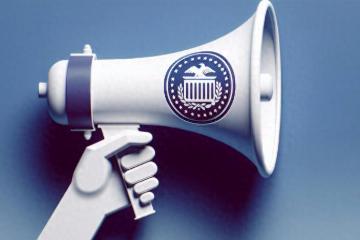Neutral Rate Key to Rate Cut Cycle
Advertisements
As the Federal Reserve grapples with its monetary policy, the debate surrounding the neutral interest rate has become a focal point in determining future actions regarding interest ratesThe neutral interest rate, which is the rate that neither stimulates nor restrains economic growth, remains elusive and is estimated based on economic behaviors rather than direct measurementWith hints from Federal Reserve Chair Jerome Powell indicating that the era of extremely low interest rates may be drawing to a close, the implications of this shift are profound for both investors and the broader economy.
Recently, Powell suggested that the Fed is prepared to pause interest rate cuts, and that the extent of future reductions might be less than previously expectedThis shift in tone might leave investors apprehensive, reflecting a market increasingly aware that the central bank might be reaching a new balance in its policy approach
The rising discourse around the neutral interest rate has led to serious contemplation on whether the economy has truly moved past an era characterized by historically low rates.
Historically, economists and policymakers have inferred the position of the neutral interest rate through a variety of factors: when borrowing and spending are robust, it is indicative that current rates are below neutrality; conversely, sluggish lending and weak demand could signify that rates exceed neutral levelsThe aftermath of the COVID-19 pandemic has only added further complexity to this assessment, as policymakers attempt to discern the new economic landscape.
This year has prompted a significant uptick in discussions regarding the neutral interest rate, especially as the Federal Reserve has notably lowered rates by a total of 100 basis pointsWith signs of economic resilience emerging, including less severe inflationary pressures than previously anticipated, there is a growing inclination among the Fed officials to exercise caution in further interest rate reductions
- Cambrian Soars Past Nvidia, Broadcom with 4x Surge
- The Fall of German Auto Giants
- Perspectives on Tech Stocks After Rate Cuts
- Yen Plunge Casts Doubt on Japan Rate Hike
- Treasury Yields Rise Amid Asset Scarcity
Powell emphasized this in a recent statement, acknowledging that while the exact level of the neutral rate is indeterminate, the Fed is now closer to it than it was before.
The shift towards higher expectations for the neutral interest rate marks a substantial departure from the post-2008 financial crisis environment, during which the Fed and economists substantially lowered their projections for what neutral rates should beThe sustained low rates and wide-ranging monetary stimulus policies instituted in past years have led many to question the sustainability of these policies, given unchanged growth dynamics.
Interestingly, some economists argue that the fiscal measures enacted during the pandemic may have elevated the neutral interest rate in recent years, establishing a new economic equilibriumThis sentiment reflects a broader consensus that high demand for investment, spurred by transitions to green energy, diversification of supply chains, and demand for more energy-intensive data processing centers due to advancements in artificial intelligence, could have lasting effects on the economy
Thus, it is suggested that the economic landscape could warrant a gradually rising neutral rate.
The Federal Reserve’s quarterly assessments have begun to mirror these new expectations, as predictions for longer-term interest rates have slowly crept upFrom a median projection of 2.5% in recent years, forecasts now appear to be stabilizing around the 3% mark, with several officials already anticipating levels above this thresholdSuch shifts signal a notable evolving perspective on how the economy might function moving forward.
However, there's a sense of caution echoed among Fed officials regarding these estimatesThere exists a real risk that reliance on potentially flawed assessments of the neutral interest rate could result in hasty policy decisionsThe balance between navigating the economy away from uncharacteristic low rates without inadvertently rekindling inflation remains delicate
Dallas Fed President Lorie Logan echoed these sentiments, cautioning against the possibility of the Fed mistakenly overshooting its target rates and facing the unappealing prospect of needing to reverse course rapidly.
The unfolding narrative around the neutral interest rate suggests that the economy is not merely returning to previous normsFactors such as demographic shifts, productivity gains, and other structural aspects that have historically influenced market behavior are in playAs these variables interact, the role of the Federal Reserve in shaping expectations cannot be understatedIn fact, economic commentators note that recent productivity gains may reflect a very different economic climate than that observed in the preceding decadeA reconsideration regarding the natural levels of interest rates could lead to a long-term cessation in rate cuts by the Fed as it evaluates its role in the shifting economic landscape.
Considering the multifaceted nature of this debate, market participants are left to navigate the uncertainty surrounding future economic conditions and the Fed's response
